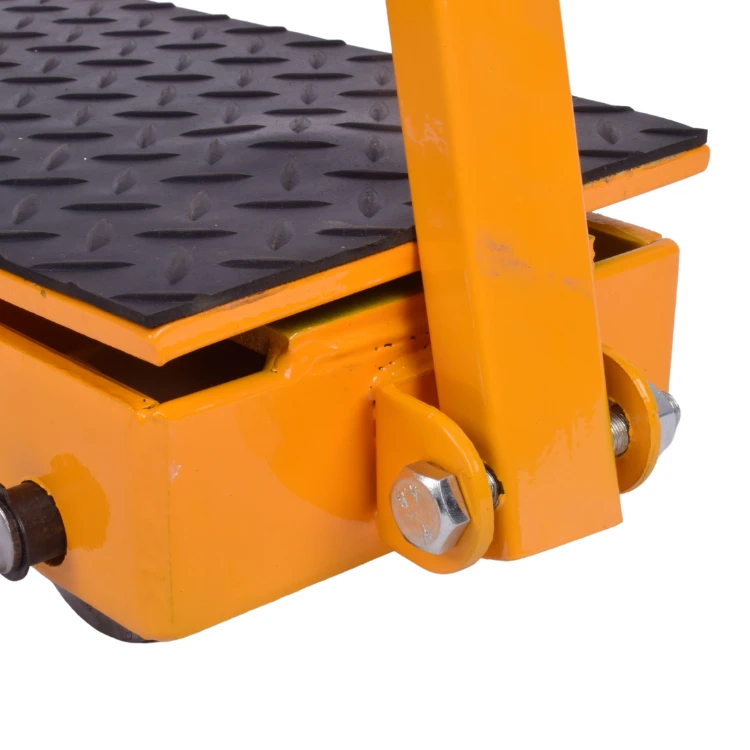permanent magnetic lifter
The Versatility and Efficiency of Permanent Magnetic Lifters
In the modern industrial landscape, the need for efficient and reliable lifting solutions is paramount. Among various lifting equipment, permanent magnetic lifters have emerged as a game-changing option, offering a blend of simplicity, efficiency, and durability. These tools utilize the principles of magnetism to facilitate the lifting and moving of heavy materials with minimal effort, making them an indispensable asset in manufacturing, construction, and warehousing applications.
Understanding Permanent Magnetic Lifters
Permanent magnetic lifters operate using permanent magnets that create a strong magnetic field. Unlike electromagnets, which require an external power source to generate magnetism, permanent magnets maintain their magnetic properties indefinitely, thus providing a constant lifting force. This unique characteristic allows them to be both lightweight and compact, as they do not require bulky power supplies or complex control systems.
The construction of a typical permanent magnetic lifter includes a sturdy body made from durable materials such as steel, which is designed to withstand harsh working conditions. Inside, powerful neodymium or ferrite magnets are strategically arranged to maximize the lifting capacity. Equipped with a simple lever or handle mechanism, operators can easily engage or disengage the lifting function, making it user-friendly and efficient.
Applications Across Industries
The applications of permanent magnetic lifters are vast and varied
. In manufacturing, they are commonly used for handling steel plates, sheets, and pipes. By utilizing these lifters, workers can effortlessly lift and move heavy materials without the risks associated with traditional hoists or cranes. In addition to improving safety, this enhances productivity, as the speed of loading and unloading is significantly increased.In the construction industry, permanent magnetic lifters are invaluable for lifting structural steel components into place. Their ability to securely attach to ferromagnetic materials allows cranes or forklifts to maneuver large elements with precision. This not only streamlines the construction process but also minimizes the risk of injury caused by manual lifting.
permanent magnetic lifter

Warehousing and logistics operations also benefit greatly from the use of magnetic lifters. They simplify the process of lifting and transporting heavy goods within storage facilities, reducing the strain on workers' bodies and decreasing the likelihood of workplace accidents. With the ability to lift multiple items simultaneously, these tools can maximize efficiency and optimize space.
Benefits of Permanent Magnetic Lifters
Several key benefits highlight why permanent magnetic lifters are favored in various applications. Firstly, their energy efficiency is a major advantage; since they do not require electricity to operate, they reduce overall energy costs for businesses. Furthermore, their low maintenance needs stem from the absence of complex electronic or motorized components, leading to lower operational costs over time.
Additionally, safety is a paramount concern in any industrial environment, and permanent magnetic lifters deliver on this front. Equipped with safety features such as locking mechanisms, they prevent accidental disengagement, thereby ensuring that loads are securely held. Moreover, the risk of slippage typically associated with traditional lifting devices is substantially reduced.
Conclusion
Permanent magnetic lifters stand out as a reliable, efficient, and safe solution for handling heavy materials in various industries. Their design simplicity and robust performance cater to the increasing demand for innovative lifting solutions in today's fast-paced operational environments. As industries continue to evolve, the reliance on permanent magnetic lifters is likely to grow, granting businesses a competitive edge through enhanced productivity and safety.
By integrating permanent magnetic lifters into their operations, companies can not only streamline their processes but also foster a culture of safety and efficiency. As the technology and design of these lifters advance, the possibilities for their application will expand, reinforcing their position as essential tools in modern industrial settings.
-
Unlock Seamless Relocation with Our Heavy Equipment Moving ExpertiseNewsJun.06,2025
-
Unleash Unrivaled Flexibility with Our Adjustable Gantry CraneNewsJun.06,2025
-
Unleash Heavy-Duty Efficiency with Our Industrial Gantry Crane SolutionsNewsJun.06,2025
-
Revolutionize Steel Handling with Our Magnetic Lifter RangeNewsJun.06,2025
-
Master Equipment Mobility with Premium Machinery Mover SolutionsNewsJun.06,2025
-
Elevate Your Material Handling with Magnetic Lifter TechnologyNewsJun.06,2025
-
YS Permanent Lifting Magnets: The Smarter Way to Handle SteelNewsMay.22,2025
